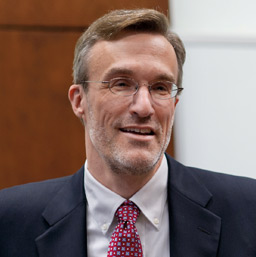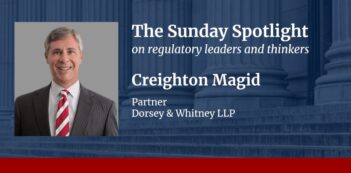
New Wharton Public Policy Initiative issue brief by Professor Coglianese reviews the evidence.
Does regulation create jobs or kill them?
Although this question has gained extraordinary political salience over the last several years, as the United States has experienced sustained levels of high unemployment, the empirical research evidence needed to answer the question remains quite limited. Some regulations can surely have discrete, even at times dramatic, effects in certain local areas, but researchers and agency analysts have made remarkably few attempts to evaluate systematically the broader employment effects of regulations after they have been adopted and implemented.
For decades, economists tended to ignore job impacts when analyzing regulations due to an assumption that any such effects would be transitory and relatively minor. After all, economically efficient regulation seeks to correct market failures and maximize net benefits – not necessarily to maximize jobs. However, in recent years, researchers have documented demonstrable negative effects to individuals and families from unemployment. When workers lose jobs in mass layoffs or during periods of high unemployment, they can expect to reenter the labor market having lost substantial earning power. Job losses have also been found to be associated with an increase in psychological stress, morbidity, and mortality. These consequential effects of unemployment help explain why jobs have figured centrally in the political debate over regulation, and why they should garner more attention from economists and other policy analysts.
Just as reflected in the political debate over regulations as job-creators versus job-killers, economic theory predicts that regulation could affect employment in different ways. First, regulation could increase the overall costs of all the inputs associated with a regulated activity, including labor, such that to continue producing at the same level firms would need both more capital and more workers, thus encouraging employment. Second, regulation could increase the costs of regulated goods or services, leading to higher prices and correspondingly reduced sales – and thereby leading firms to need fewer workers. Finally, regulation might change the mix of labor and capital through the introduction of new technologies, and that change could either increase or decrease the amount of labor required for a given unit of output.
With no compelling theoretical reason to expect regulation will result in overall job losses or gains, the issue becomes an empirical one. It is possible, after all, for any given regulation to have a positive or negative net impact on job levels within a particular regulated sector, and possible too for regulation overall to stimulate jobs just as it reduces them.
What does the empirical evidence show? Only a few published studies have rigorously examined whether regulation overall leads to systemic changes in employment, mainly in the context of environmental regulation. In one of the earliest studies, economists Eli Berman and Linda Bui analyzed manufacturing job effects associated with local air pollution regulations adopted in Southern California. Comparing employment in that region over time as well as in comparable firms outside of Southern California, Berman and Bui found no substantive or statistically significant effects of local air pollution regulations on employment.
Economist Richard Morgenstern and his colleagues also studied the impacts of environmental regulation. They evaluated whether reported spending by businesses to comply with environmental regulation correlated with changes in employment levels across those firms, but again found no substantively or statistically significant changes in the four industrial sectors examined in the period 1979-1991. However, when analyzed separately, two of these four sectors actually showed small, statistically significant increases in jobs in the face of increased regulatory compliance spending.
By contrast, economist Michael Greenstone found a decrease of an average of about 40,000 jobs per year in facilities located in areas of the country declared to have “dirty” air and made subject to more stringent air pollution requirements under the Clean Air Act. However, because the differences in Greenstone’s study were relative ones – that is, derived from a comparison with areas in the country lacking the more stringent controls – it is not known how much of the decrease reflected true job “losses” rather than a shift in jobs from dirtier areas of the country to cleaner ones. Such a shift may even occur across facilities owned by the same firm but located in different parts of the country.
A more recent, unpublished paper also reported changes in employment arising with regulatory differences associated with the Clean Air Act’s air quality designations. Economist Reed Walker tracked workers over time and compared wage differences in cleaner (less regulated) versus dirtier (more regulated) areas of the country. He found that, in the five years following the imposition of new regulatory standards, overall employment in the more stringently regulated areas fell by at most about 0.7 percent and workers in polluting sectors saw on average a 23 percent reduction in the present value of their wages following new regulatory controls.
Considered today, the mixed findings across the existing studies appear difficult to reconcile, but at a minimum they suggest that the relationship between regulation and jobs is more complex than portrayed by either of the polar extremes expressed in contemporary political discourse. Undoubtedly regulation does sometimes lead to some workers being laid off due to plant closures or slowdowns, but also it is certainly true that workers are sometimes hired to install and run new technologies or processes needed to comply with new regulations.
More importantly, the research reveals that even if these losses and gains sometimes cancel themselves out when tallying aggregate impacts, regulation still can create consequences associated with job shifts. Job shifts can occur as workers move to new facilities or assume new responsibilities within the same firms, as well as when they take on new jobs in altogether different firms.
The transitional costs and permanent wage effects associated with job shifts, as well as losses and gains, cannot be ignored in the future if researchers and regulators are to assess better how regulation affects employment.




